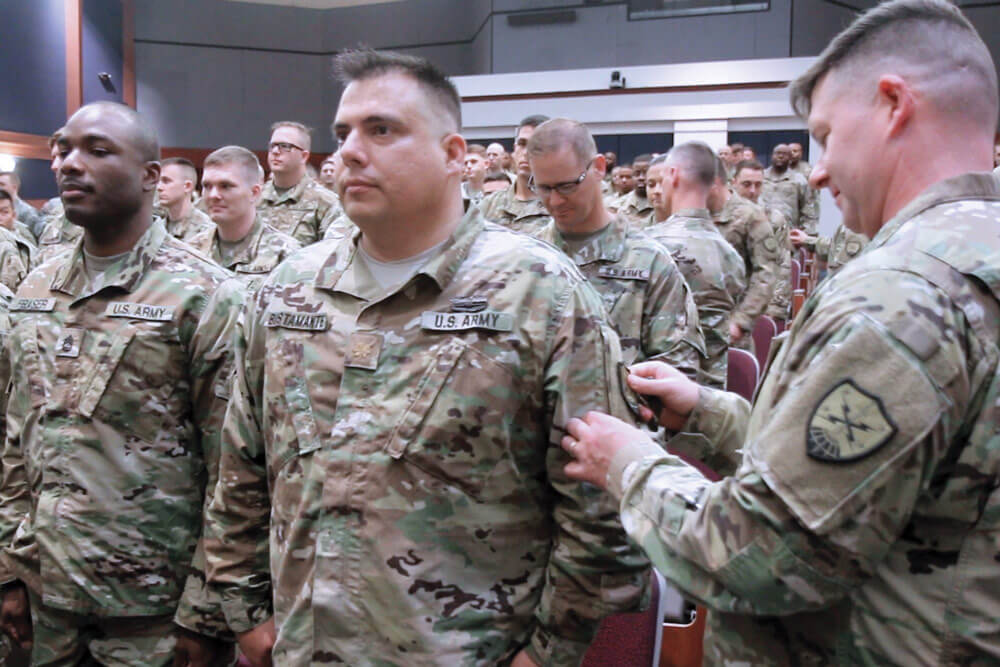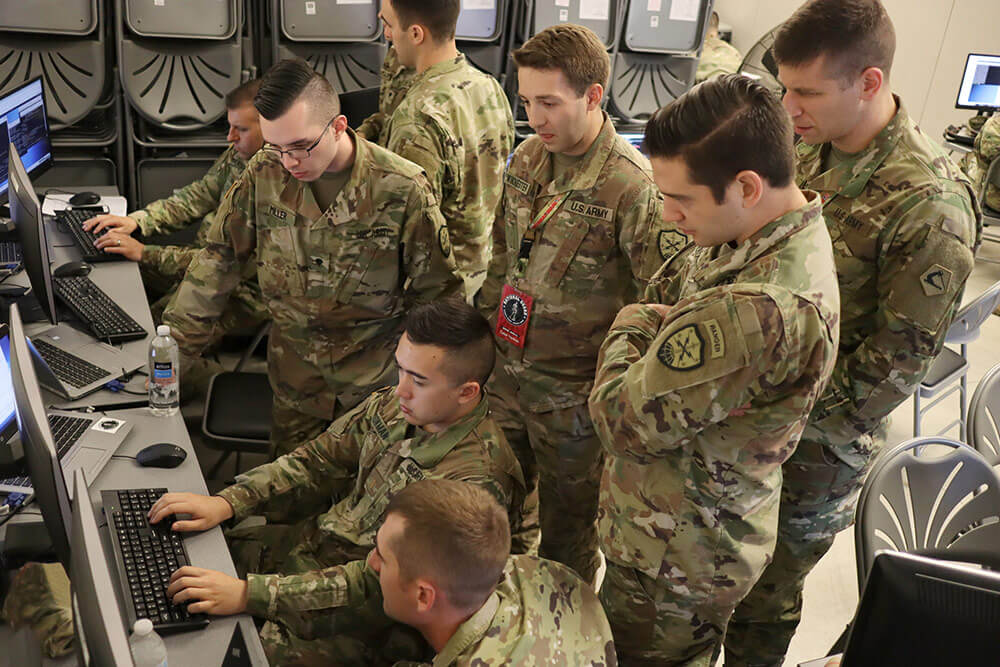Your MOS might not require handling government secrets, but Cybersecurity is every Soldier’s concern. Take a look at the questions below and see how many you can answer correctly. Get one or two right, and you will wear the tag of a Cyber Toddler. With three or four right, you’re a Web Warrior. Five or six right means you’re a Network Ninja. Get all seven answers correct and you’ve earned the rank of Digital Dominator!
1. Is free public Wi-Fi safe?
a) As long as you don’t access secure accounts.
b) As long as your screen can’t be seen by others.
c) Public Wi-Fi is vulnerable to malware, man-in-the-middle attacks and other eavesdropping.
d) As long as you only access https websites.
2. What are Common cyber vulnerabilities?
a) Socially engineered malware.
b) Password phishing attacks.
c) Shark phishing attacks.
d) A & B.
3. What is the concept of Trust No One (TNO)?
a) The nagging suspicion that everyone is out to get you.
b) The idea that no one except yourself should be trusted for the storage of the keys behind the applied encryption technology.
c) A random Army National Guard acronym.
d) A reminder to only exchange information that is need-to-know.
4. What is the difference between encoding and encryption?
a) Encoding involves codes while encrypting involves cyphers.
b) Encoders rule, but encryptions drool.
c) Encoding maintains data usage and is reversible; encryption maintains data confidentiality and requires
d) a key.
e) Encryption was invented in the 20th century and encoding was invented in the 21st century.
5. What is the principle of least privilege?
a) The principle of lower ranks getting less computer time.
b) Encouraging minimal user profile privileges, based on a user’s job necessities.
c) A hierarchy of preferred coding languages.
d) A concept related to trickle-down economics.
6. How safe is the Cloud?
a) Cloud computing may have password vulnerabilities.
b) Cloud computing may be susceptible to enroute exposure – hacking that occurs while data are in transport from a device to the cloud, and vice versa.
c) Clouds are pretty.
d) A & B (and maybe C).
Bonus: How old is the internet?
a) Like Yoda-old.
b) The World Wide Web was developed by the National Security Agency (NSA) in 1957.
c) Al Gore developed the internet in 1994.
d) The first host-to-host message was sent on the Advanced Research Projects Agency Network (ARPANET) in 1969.
NEVER FORGET:
According to the DoD, nearly 90 percent of the information collected by adversaries comes from open sources. Any information that can be legally and freely obtained is open source. Social network tweets and postings, text messages, blogs, videos, photos and GPS mapping are all examples of open source information.
As part of the DoD community, every Soldier should be constantly aware of OPSEC best practices. OPSEC is best employed daily when making choices about what communications to use, what to write in emails, say on the phone or post on social networking sites and blogs. Any information located in the public domain, whether printed, audiovisual or electronic media, may become accessible by our Nation’s adversaries.
ANSWERS: ) c ) d ) b ) c ) b ) d ) d
By Staff Writer Matthew Liptak



